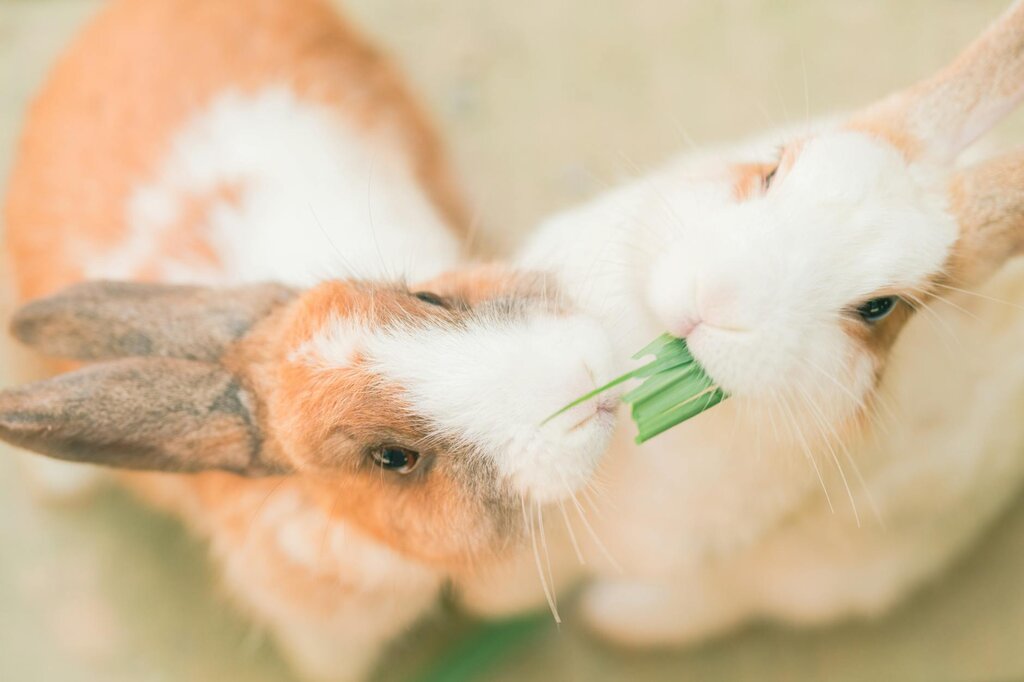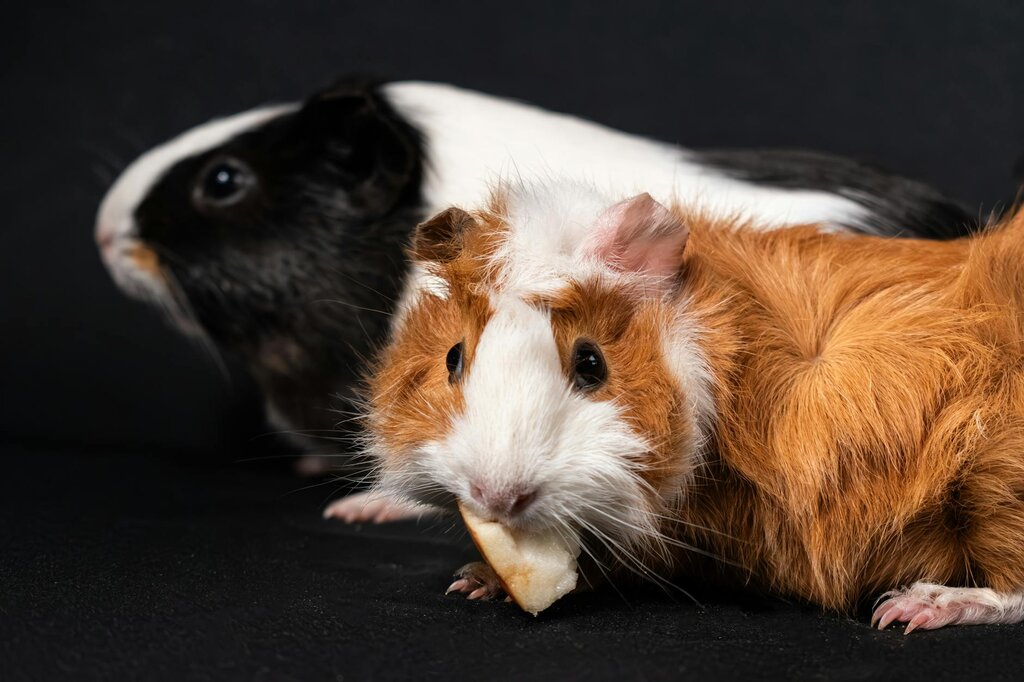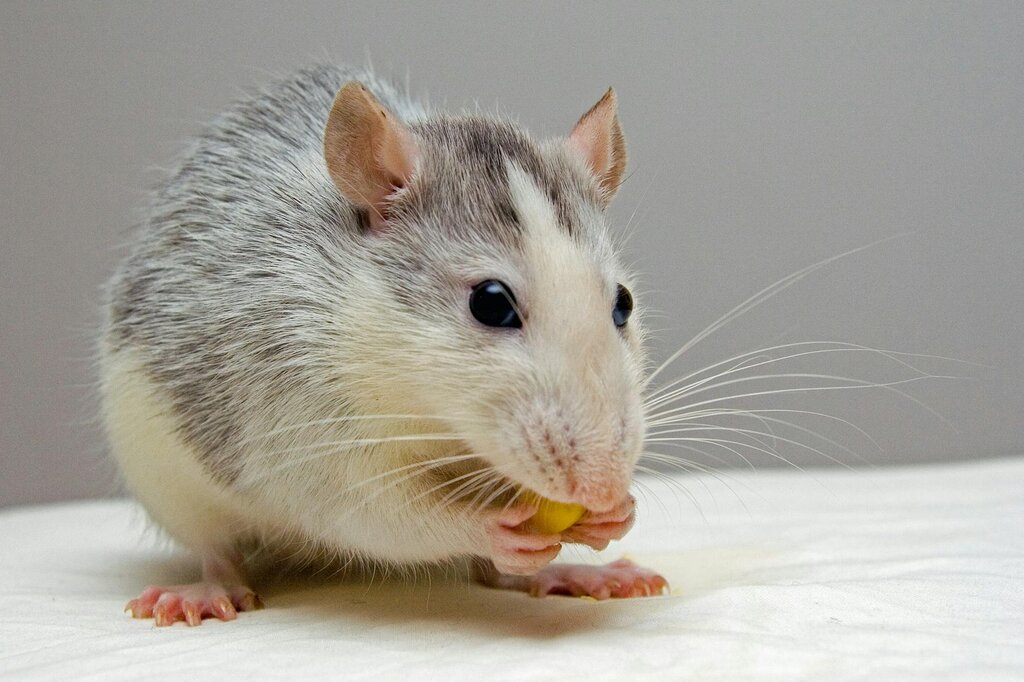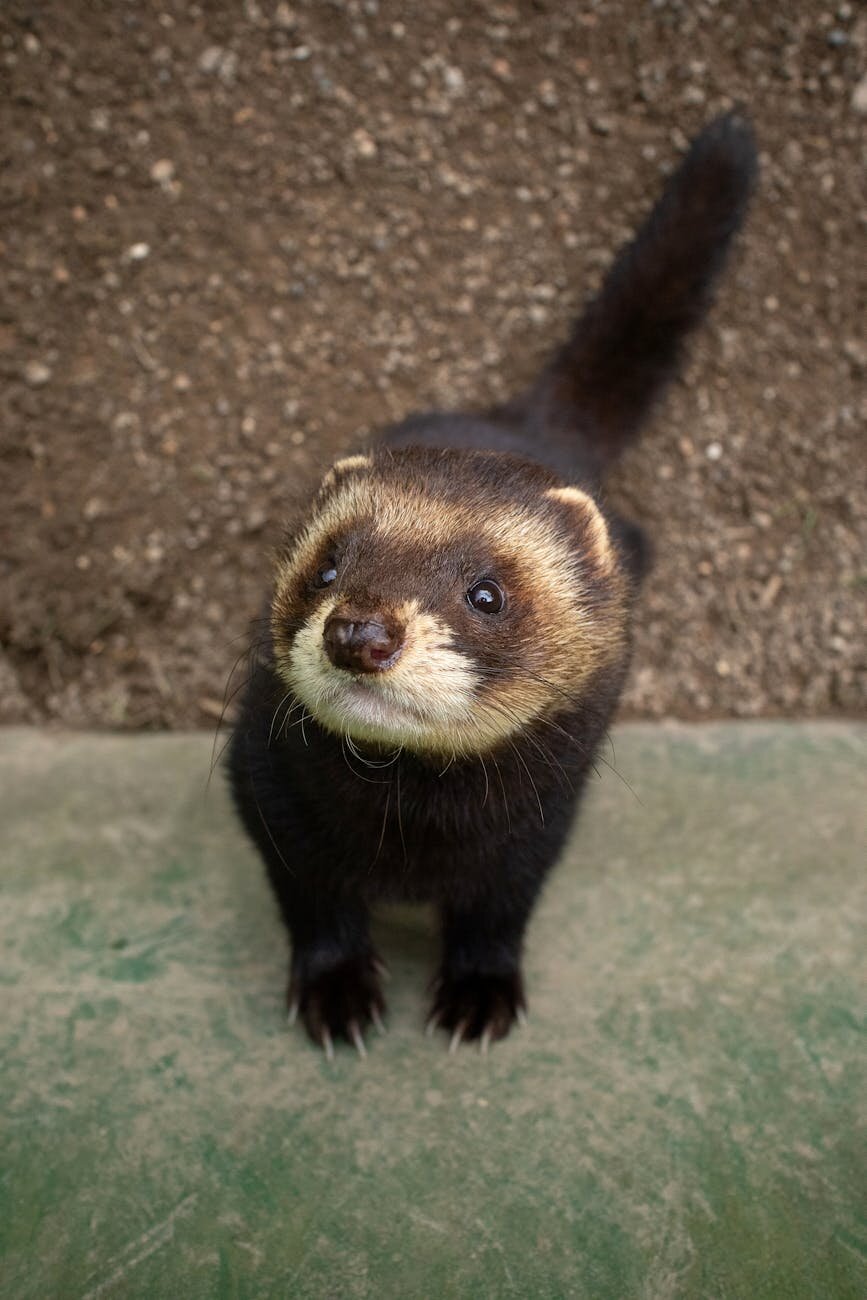Last Updated: 11/11/2025
What To Feed Rats Rabbits Guinea Pigs and Ferrets
What is the ideal diet for your small pet? Find the answers in our complete guide to nutrition for rabbits, guinea pigs, mice, rats, and ferrets.
Author: Dr Carla Paszkowski BVSc (Hons)
Reading Time: 9 minutes - short read
From rabbits to mice, small mammals or small pets can make excellent companions. Rats are incredibly smart and can be taught a whole array of fun tricks. Rabbits can easily learn to use a litter tray and live as apartment pets. Guinea pigs are just about the most gentle creatures ever, with distinctive 'wheek' calls that are hard not to love. And ferrets are a quirky animal full of energy. Each small pet is equipped with their own unique and playful personality but to ensure these pets live a long and healthy life, getting their diet right is essential!
First things first: if you're starting from the ground up, we suggest you read our species-specific "Complete Beginners Guides" for: Rabbit Care, Guinea Pig Care, Rat Care, or Ferret Care.
Once you've got everything set up for an appropriate living environment, it's time to look at what food your fur friend will need. Every small mammal species has a unique diet, and it's absolutely vital to ensure their individual dietary requirements are met. We've set out our guide below via species, with an outline of their feeding requirements and our top food recommendations.
Rabbit Feeding Guide

A rabbit's diet should be made up of 80% grass or hay, 10% vegetables, and 10% pellets. Treats such as berries, banana or carrot should only be fed sparingly as treats and should not make up more than 5% of the overall diet.
Grass or Hay is the most important part of the rabbit diet, as it supports their digestive system and helps them keep their continuously growing teeth worn down. Hay can be offered in a rack, basket, litter tray or similar container. Each rabbit has their own preferences so play around to see what your rabbit likes. It's essential that your rabbit has constant access to hay and that it is provided fresh daily.
Adult rabbits should not be fed Lucerne (alfalfa) or Clover hay, due to their high protein and calcium content. These types of hay may be okay as an occasional treat for some rabbits but they are mostly suitable for juvenile growing rabbits up to 6 months of age, nursing and pregnant does. Hay or grass should be available 24 hours a day and of good quality and it's ideal to feed a mix of hay types eg timothy, oaten, meadow, orchard, botanical, teff and fescue varieties.
Did you know: Rabbit teeth never stop growing. Just like guinea pigs, rats, and mice, rabbit teeth grow continuously. They require chewing objects such as wood, hay, and chew treat toys so they can grind down their teeth daily. If left without objects, their teeth can become overgrown, painful, and impede their ability to eat.
What fruit and vegetables are safe for rabbits?
The best vegetables and herbs for rabbits include dark leafy greens such as asian greens, fennel, endive, mint, basil, coriander, parsley, kale and spinach (in small quantities).
Do not feed: potatoes (both leaves of the plant or the potato itself) or tomato leaves to rabbits, as these can be toxic.
Fruit is rich in sugar, so it should be given only occasionally and in small quantities. Safe fruits include strawberry, apple, pear, blueberry, raspberry or banana. You will quickly notice that rabbits love fruit; but try not to give into their begging eyes too often, as too much sugar can lead to weight gain, dental disease and digestive disorders including 'gut stasis'.
What is the best rabbit food?
Guinea Pig Feeding Guide

Guinea pigs are herbivores who naturally spend most of their day grazing. They require a constant 'stream' of long stem fibre in the form of hay or grass - in fact, a guinea pig's hindgut is constantly secreting digestive fluids and can suffer from ulcers if food is withheld for even a few hours.
A guinea pig diet should be set out as follows:
- 70-80% Grass and/or grass hay
- 10-15% Fresh leafy green vegetables and herbs
- up to 5% fruits, particularly as a dietary source of Vitamin C
- 5-10% commercial mixture of high-quality pellets
- Access to fresh water at all times.
For the grass / grass hay portion, a constant supply should be provided. Cavies particularly love fresh grass, which makes them handy lawn mowers but it's important only to fed fresh grass that hasn't been sprayed with fertilisers and never freshly mowed grass! Cavies are hindgut fermenters, which means they need to be almost constantly eating. Species of grass that are suitable include Timothy, Wheaten, Oaten, Pasture, Paddock, Ryegrass, or Meadow. Lucerne (alfalfa) is ok for pregnant, nursing or juvenile guinea pigs up to 6 months of age, but is a little too high in calcium for adult piggies - so it's best to avoid in these guys. Just like for rabbits, it's great to feed a blend of hays to keep things interesting and for these little pets to reap all the health benefits.
The best vegetables for guinea pigs include fresh leafy green vegetables and herbs such as pak choy/bok choy, endive, Chinese broccoli, carrot tops, dandelion, parsley, dark leaf lettuce, coriander, basil, and dill. As well as fresh foods high in vitamin C such as capsicum. Approximately one cup per day is ideal for one adult piggy.
Vitamin C is vital for guinea pigs because just like humans, they cannot synthesise it from other foods. You may wish to provide a Vitamin C supplement. However, many well formulated guinea pig pellets are fortified with vitamin C and it is found in many natural foods including dark leafy greens, capsicum and strawberries. Strawberries, other berries, carrot and fruits like banana, apple and pear can be provided occasionally in small portions as a treat. Plus, guinea pigs love sweet fruit, and you will probably be greeted with extra-enthusiastic 'wheeks!' every time you approach with fruit!
Pellets are a great way to give your cavy some extra nutrition in addition to grass and veggies. Always go for a high quality, high fibre pellet such as the recommendations bellow.
In terms of fresh water, it is ideal to have a heavy water bowl (such as one made of ceramic) as guinea pigs can be a little messy and tip over their bowl. For this reason, it is also handy to have an upright bottle as a backup.
What is the best guinea pig food?
Rat and Mouse Feeding Guide

What do rats and mice eat?
When it comes to your rat or mouse's diet, you'll be surprised at what's on the menu! Rats and mice are omnivorous, so they can eat a huge variety of fruits, vegetables, wholegrains, meats and even a small amount of dairy (as a treat only!)
A high-quality pellet food formulated especially for rats and mice is important and should make up 30-50% of their diet. A balanced pellet food will play an essential role in your rodent's health, and should be fed daily. Approximately 50-60% of the diet should be made up of a variety of fresh vegetables and smaller portions of fruits,due to the natural sugars. The remaining 10-20% should consist of healthy wholegrains like quinoa, healthy fats like chia seeds and fatty fish and small amounts of animal protein like chicken are okay too.
Treats should not make up more than 10% of the diet and can include seeds, nuts and dried fruits.
What 'human food' is safe for rats?
Any of the following food items are fine to give to your pet rat:
- Apples
- Bananas
- Pears
- Carrots
- Nuts including almonds, walnuts, and Brazil nuts
- Cooked green bean
- Pasta and brown rice
- Dry rolled oats
- Scrambled eggs
- Chicken
- Natural Yoghurt
- ...plus much, much more!
What food is unsafe to feed rats and mice?
Always avoid chocolate, raw beans, cabbage and brussel sprouts, green potatoes, raw sweet potato and sugary sweets. We also don't recommend citrus fruits like orange, grapefruit or lemons.
What is the best rat and mouse food?
Ferret Feeding Guide

What do ferrets eat?
Unlike all the other small mammal species mentioned above, ferrets are obligate carnivores. This means they should eat meat, meat, and more meat!
Ferrets have a very short intestinal tract and tend to eat small meals frequently, otherwise they are prone to low blood sugar episodes. They possess a set of 34 carnivorous teeth, which closely resemble a cat's, complete with sharp canines and molars.
Ferrets are physiologically designed to thrive on whole-prey items such as rodents, day old chicks and quails. This reflects their natural biological and evolutionary dietary patterns. Many owners have a reluctance to feed whole prey items or some ferrets may have an aversion to eating whole prey unless they were introduced at a young age, as ferrets imprint on their food. However, it is ideal that ferrets are fed ethically killed, thawed whole prey items at least 2-3 times a week. The remainder of the diet should comprise of a formulated ferret, cat or kitten kibble that is high in both protein (30-40%) and fat (15-30%) and low in fibre to meet a ferret's nutritional needs. See below for our top recommendations.
How much kitten food should you feed your ferret?
If choosing to feed a kitten food to your ferret, it's important to figure out how much is needed per day. Feeding guidelines on the packaging of cat food will not provide amounts for ferrets, so you will need to calculate this yourself (or with the help of your vet). An adult ferret needs approximately 200-300 calories per kilogram of body weight, per day.
For example: one of our recommendations is the high meat, grain-free kitten diet from Ivory Coat. This contains 3,600 Kcal per kilogram, which equates to 3.6 calories / gram of food. (Note that the calories per gram does change based on the brand of food, so you will need to check the manufacturer's website to be sure). If your ferret weighs 1kg, and is moderately active (therefore requiring somewhere in the middle of the range at 250kcal per day), you can work out their required food with the following calculation:
Calories required per day / calories per gram of food
250 / 3.6
= 69
Therefore, a 1kg moderately active ferret requires 69g of Ivory Coat Kitten food per day.
What is the best ferret food ?
What 'human food' is safe for ferrets?
Any of the following food items are fine to give to your pet ferret:
- Any meat, cooked or raw (only if very fresh)
- Eggs (particularly as a treat)
- Liver
- Raw chicken wings or other small raw bones like chicken necks to help clean the teeth (only if very fresh)
What food is unsafe for ferrets?
Always avoid chocolate, onions, garlic, sugary foods, dairy products, dog food, and peas. Fruit and vegetables also shouldn't be given in excess to your ferret. They contain complex carbohydrates which are high in fibre that ferrets cannot digest, meaning they have a low nutritional value.
Further Reading
Want to read more? Check out our other pocket pet articles:
- Complete Rat Care Guide
- How To Recognise Gut Stasis in Rabbits
- Top Tips to Get Your Pet to Eat More Hay
- Train Your Rabbit To Use a Litter Tray
- Beginner's Guide to Guinea Pig Care
Articles recommended for you
Our vet authored guide to the benefits of feeding your dog fresh food plus tips and advice for introducing it into their regular menu.
See our guide to protecting your pet from parasites from our vet team.
Thinking of getting a fish? Check out our guide for setting up a tank and home care tips!
Looking to understand horse feeds better? This comprehensive guide covers feeding recommendations for horses of all ages and disciplines.
Does your pet suffer from anxiety? Check out our Vet-guide for treatment options to help your pet.
History
Our experts continually monitor the health and wellness space and we update our articles when new information becomes available.
Tue Nov 11 2025
Edited by Dr Antonella Virina DVMDr Carla Paszkowski BVSc (Hons)
Veterinarian
Dr. Carla graduated from the University of Queensland in 2013 with a Bachelor of Veterinary Science and worked for a number of years in small animal clinics across South East Queensland. While Carla enjoys most facets of clinical veterinary work, she holds a special passion for feline medicine, pocket pets, and nutrition.

